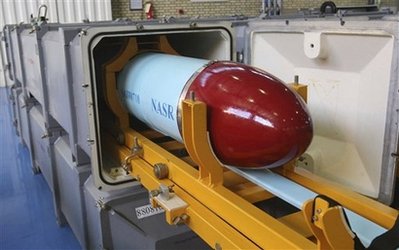Global General
Iran begins production of cruise missiles
(Agencies)
Updated: 2010-03-08 09:01
 |
Large Medium Small |
|
|
TEHRAN, Iran - Iran announced Sunday that it has started a new production line of highly accurate, short range cruise missiles, which would add a new element to the country's already imposing arsenal.
Gen. Ahmad Vahidi told Iranian state TV that the cruise missile, called Nasr 1, would be capable of destroying targets up to 3,000 tons in size.
The minister said the missile can be fired from ground-based launchers as well as ships, but would eventually be modified to be fired from helicopters and submarines.
The West is considering stiffer sanctions against Tehran to try to force it to halt uranium enrichment, a process that has civilian uses but can be also used for nuclear arms if the uranium is enriched over 90 percent.
Iran also boasts an array of short and medium-range missiles capable of hitting targets in the region, including Israel, US military bases in the region and much of Europe.
Tehran frequently makes announcements about new advances in military technology that cannot be independently verified.
Gen. Vahidi said the production of the cruise missiles, which took two years to develop, showed that sanctions on Iran have failed. He said the cruise missiles would strengthen Iran's naval power.
Cruise missiles are highly advanced, usually subsonic rocket-powered weapons that can hug the ground and hit targets with great precision. The US used large numbers of cruise missiles in its attack on Baghdad in 2002, launching most of them from warships in the Persian Gulf.
Iranian state TV showed a video of boxes in a warehouse containing several missiles. It also showed footage of Iran's cruise missile test in 2007. That missile was apparently imported.
Tehran began a military self-sufficiency program in 1992, under which it produces a large range of weapons, including tanks, missiles, jet fighters, unmanned drone aircraft and torpedoes.











